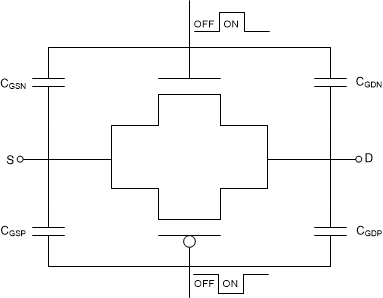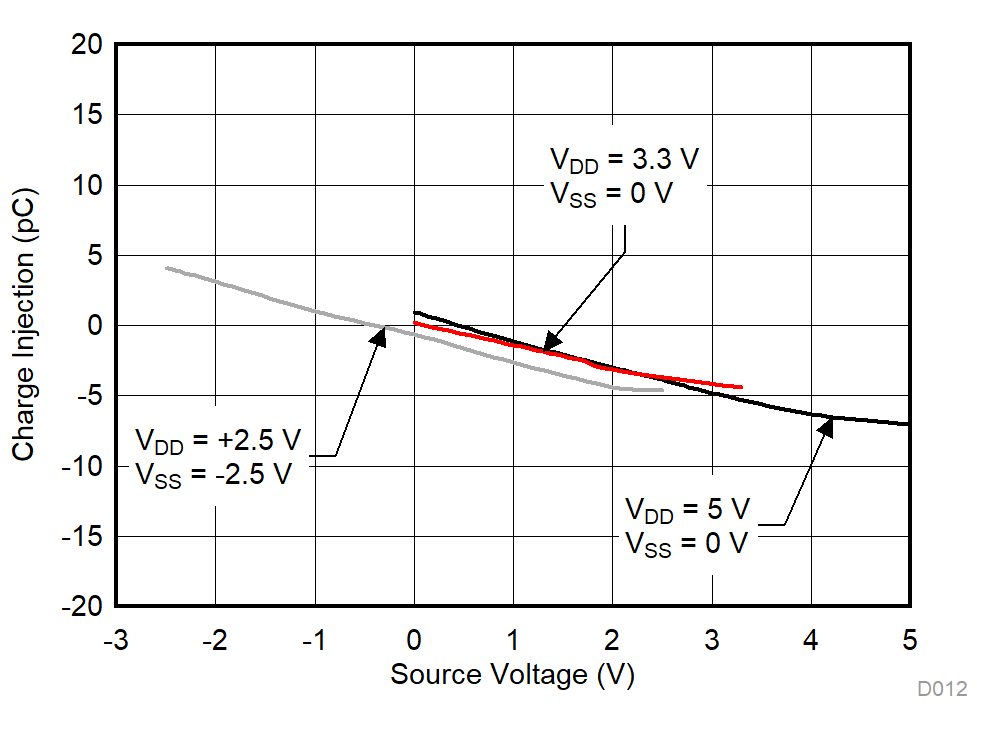SCDS412B June 2019 – January 2024 TMUX1133 , TMUX1134
PRODUCTION DATA
- 1
- 1 Features
- 2 Applications
- 3 Description
- 4 Device Comparison Table
- 5 Pin Configuration and Functions
-
6 Specifications
- 6.1 Absolute Maximum Ratings
- 6.2 ESD Ratings
- 6.3 Recommended Operating Conditions
- 6.4 Thermal Information
- 6.5 Electrical Characteristics (VDD = 5V ±10 %)
- 6.6 Electrical Characteristics (VDD = 3.3V ±10 %)
- 6.7 Electrical Characteristics (VDD = 2.5V ±10 %), (VSS = –2.5V ±10 %)
- 6.8 Electrical Characteristics (VDD = 1.8V ±10 %)
- 6.9 Electrical Characteristics (VDD = 1.2V ±10 %)
- 6.10 Typical Characteristics
- 7 Parameter Measurement Information
- 8 Detailed Description
- 9 Application and Implementation
- 10Device and Documentation Support
- 11Revision History
- 12Mechanical, Packaging, and Orderable Information
Package Options
Mechanical Data (Package|Pins)
- PW|20
Thermal pad, mechanical data (Package|Pins)
- PW|20
Orderable Information
8.3.6 Ultra-Low Charge Injection
The TMUX113x devices have a transmission gate topology, as shown in Figure 8-2. Any mismatch in the stray capacitance associated with the NMOS and PMOS causes an output level change whenever the switch is opened or closed.
The TMUX113x devices have special charge-injection cancellation circuitry that reduces the source-to-drain charge injection to -1pC at VS = 1V as shown in Figure 8-3.
 Figure 8-2 Transmission Gate Topology
Figure 8-2 Transmission Gate Topology Figure 8-3 Charge Injection vs Source Voltage
Figure 8-3 Charge Injection vs Source Voltage